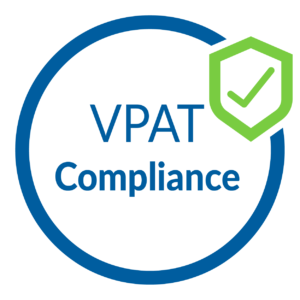In an increasingly digital world, ensuring that products and services are accessible to everyone, including those with disabilities, has become a priority for many organizations. This is especially true for companies seeking to secure government contracts. A key component in this process is the Voluntary Product Accessibility Template (VPAT), which plays a crucial role in demonstrating compliance with accessibility standards. This article will explore the significance of VPAT in meeting accessibility compliance for government contracts and how it aligns with federal requirements and guidelines, such as the Web Content Accessibility Guidelines (WCAG).
What is a VPAT?
The Voluntary Product Accessibility Template (VPAT) is a document used by vendors to provide detailed information about how their products or services conform to accessibility standards. Originally developed by the U.S. General Services Administration (GSA), the VPAT helps organizations evaluate and communicate the accessibility features of their offerings. This documentation is vital for companies looking to do business with government agencies, as it demonstrates a commitment to accessibility and compliance with federal regulations.
Why VPAT is Crucial for Government Contracts
When bidding on government contracts, especially those that involve technology or digital services, companies must meet specific accessibility requirements. These requirements are designed to ensure that all individuals, regardless of their abilities, have equal access to government services and information. VPAT serves as a key tool in this process for several reasons:
- Compliance with Federal Standards: Government agencies are required to adhere to federal accessibility standards, including Section 508 of the Rehabilitation Act. Section 508 mandates that electronic and information technology developed, procured, or maintained by federal agencies must be accessible to individuals with disabilities. By providing a VPAT, vendors can clearly demonstrate how their products meet these standards.
- Transparency and Accountability: VPATs offer a transparent view of how well a product aligns with accessibility guidelines. This transparency helps government agencies make informed decisions about which products or services best meet their accessibility needs. It also holds vendors accountable for their accessibility claims, fostering a culture of openness and responsibility.
- Competitive Advantage: For many companies, having a VPAT can be a competitive advantage. Government contracts often favor vendors that can prove their commitment to accessibility, as this aligns with the federal mandate for inclusivity. A well-prepared VPAT can set a company apart from competitors and increase its chances of winning contracts.
How VPAT Helps Meet Accessibility Requirements
The VPAT provides a structured way for vendors to evaluate their products against accessibility standards. It includes several sections that address different aspects of accessibility, including:
- Section 508 Compliance: This section of the VPAT requires vendors to detail how their product meets the requirements of Section 508. Vendors must assess their product against specific criteria, such as text alternatives for non-text content and keyboard accessibility, and provide detailed responses.
- WCAG Compliance: The Web Content Accessibility Guidelines (WCAG) are a set of guidelines developed by the World Wide Web Consortium (W3C) to ensure web content is accessible to people with disabilities. The VPAT includes a section for vendors to describe how their product aligns with WCAG standards, which are essential for web-based products and services. Compliance with WCAG ensures that digital content is perceivable, operable, understandable, and robust for all users.
- Additional Accessibility Standards: Beyond Section 508 and WCAG, the VPAT may also address other accessibility standards relevant to the product or service in question. This comprehensive approach ensures that all potential accessibility issues are covered.
Best Practices for Completing a VPAT
Creating a VPAT that accurately reflects a product’s accessibility requires careful attention and adherence to best practices. Here are some tips for completing a VPAT effectively:
- Conduct a Thorough Accessibility Audit: Before filling out the VPAT, conduct a comprehensive accessibility audit of your product. This may involve using automated tools, manual testing, and user feedback to identify and address accessibility issues. A thorough audit ensures that the information provided in the VPAT is accurate and reliable.
- Be Honest and Detailed: When filling out the VPAT, provide honest and detailed responses. If your product does not fully meet certain accessibility criteria, acknowledge these gaps and explain any plans for remediation. Transparency is crucial for building trust with government agencies and potential users.
- Stay Updated: Accessibility standards and guidelines evolve over time. Stay informed about changes to Section 508, WCAG, and other relevant standards to ensure that your VPAT remains current and accurate.
- Engage Accessibility Experts: Consider involving accessibility experts in the VPAT creation process. These professionals can provide valuable insights and help ensure that your product meets all necessary accessibility standards.
Challenges and Solutions
While the VPAT is an invaluable tool for demonstrating accessibility compliance, it is not without its challenges. Some common challenges and potential solutions include:
- Complex Products: For products with multiple components or features, completing the VPAT can be complex. To manage this, break down the assessment into smaller sections and address each component individually. This approach helps ensure that all aspects of the product are covered.
- Changing Standards: Accessibility standards can change, and keeping up with these changes can be challenging. Regularly review and update your VPAT to reflect any new standards or guidelines. Consider establishing a process for periodic review and revision of your accessibility documentation.
- Balancing Accuracy and Transparency: Striking a balance between providing accurate information and maintaining transparency can be challenging. Focus on providing a clear and honest assessment of your product’s accessibility features, and be transparent about any limitations or areas for improvement.
Conclusion
The Voluntary Product Accessibility Template (VPAT) is a vital tool for organizations seeking government contracts, as it provides a clear and structured way to demonstrate compliance with accessibility standards. By aligning with federal requirements, such as Section 508 and the Web Content Accessibility Guidelines (WCAG), and following best practices for completing a VPAT, vendors can enhance their chances of securing government contracts and contribute to a more inclusive digital environment. Embracing the VPAT not only helps meet legal obligations but also reflects a commitment to accessibility and inclusivity, which is increasingly valued by government agencies and users alike.
We Offer Web & Mobile Accessibility Testing
We at ‘Accessible Zone‘ provide web, mobile and software accessibility testing services. We perform testing manually using screen reader such as JAWS, NVDA & Voiceovers. We also provide VPAT and ACR reports. If you want to use our services do contact us as at contact@accessiblezone.com or you can also schedule a free call with us from here.



